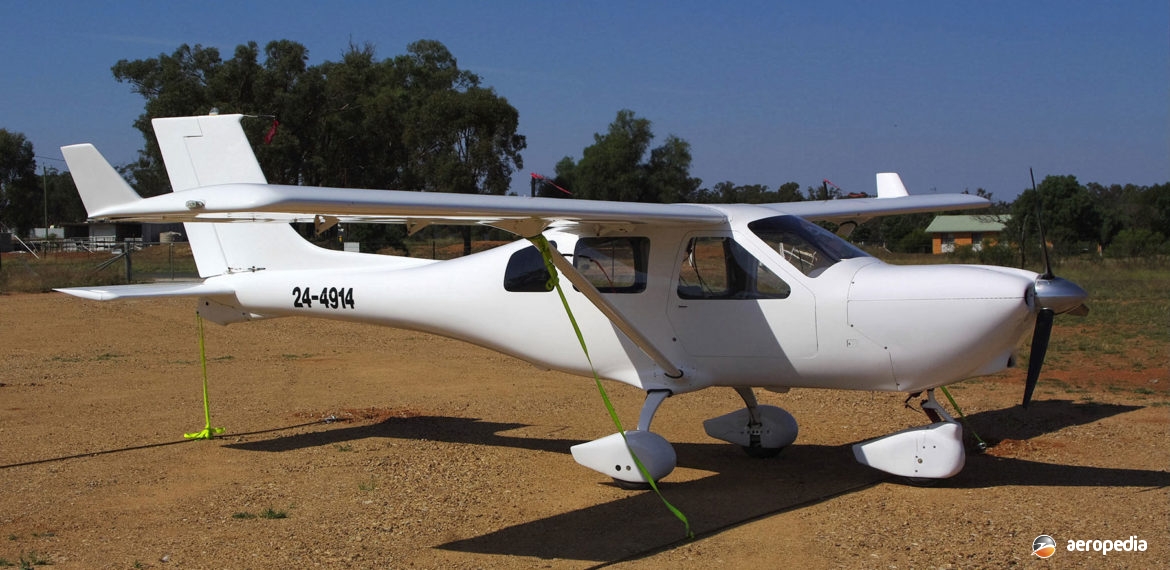Photograph:
Jabiru J-230 24-4914 (c/n J-322) at Temora, NSW (David C Eyre)
Country of origin:
Australia
Description:
Two-seat light sport monoplane
Power Plant:
One 90 kw (120 hp) Jabiru 3300 six-cylinder four-stroke horizontally-opposed air-cooled engine
Specifications:
- Wingspan (less winglets): 9.43 m (30 ft 9 in)
- Length: 6.55 m (21 ft 5 in)
- Height: 2.4 m (7 ft 9 in)
- Wing area: 9.34 m² (100.5 sq ft)
- Max speed: 256 km/h (159 mph)
- Max cruising speed: 222 km/h (138 mph)
- Stalling speed clean: 92 km/h (57 mph)
- Stalling speed full flap: 84 km/h (52 mph)
- Rate of climb at sea level: 213 m/min (700 ft/min)
- Service ceiling: 4,572 m (15,000 ft)
- Range: 1,482 km (921 miles)
- Endurance no reserve: 6.7 hours
- Fuel capacity: 135 litres (29.7 Imp gals)
- Take-off run: 150 m (492 ft)
- Landing run: 180 m (656 ft)
- Empty weight: 360 kg (792 lb)
- Useful load: 240 kg (528 lb)
- Loaded weight: 600 kg (1,320 lb)
History:
The Jabiru J-230 series was the culmination of the series fitted with a six-cylinder Jabiru engine aimed at the registered general aviation market. Designed to JAR-VLA European airworthiness standards, it was a high-wing, strut-braced monoplane with wing flaps, mass balanced elevator and in-flight adjustable trim. Fitted with the Company’s four-stroke Jabiru 3300 engine it was described as having gentle and predictable stall characteristics, light and responsive controls, with a fully enclosed, ergonomically designed, cabin with three doors providing access to the cabin, two for the pilot and passenger, and one for the luggage area.
It had side-by-side seating with centre controls and panel mounted throttles, a tricycle undercarriage with a steerable nosewheel and hydraulic disc brakes. It was of all-composite construction and was designed for minimum maintenance.
Following the introduction of LSA Regulations in the United States, Jabiru announced a new model was available for the Recreational Avition Australila (RAA) market, this model using the UL-450 fuselage, the foam-filled wings from the SP and a 65 litre (14 Imp gal) fuel tank, this being an entry-level aircraft. This model had manually-operated flaps and, as did the Model J-120, a 2200 cc Jabiru engine and a 265 kg (584 lb) empty weight.
In early 2008 Rodney Stiff, one of the founding partners of Jabiru Aircraft, announced the Company was going to build and develop a helicopter at its Bundaberg facility aimed at the cattle mustering market. However, after some design work and the commencement of construction of a prototype, work stopped and is not known to have re-commenced.

